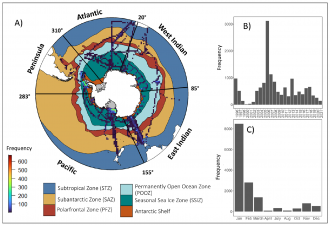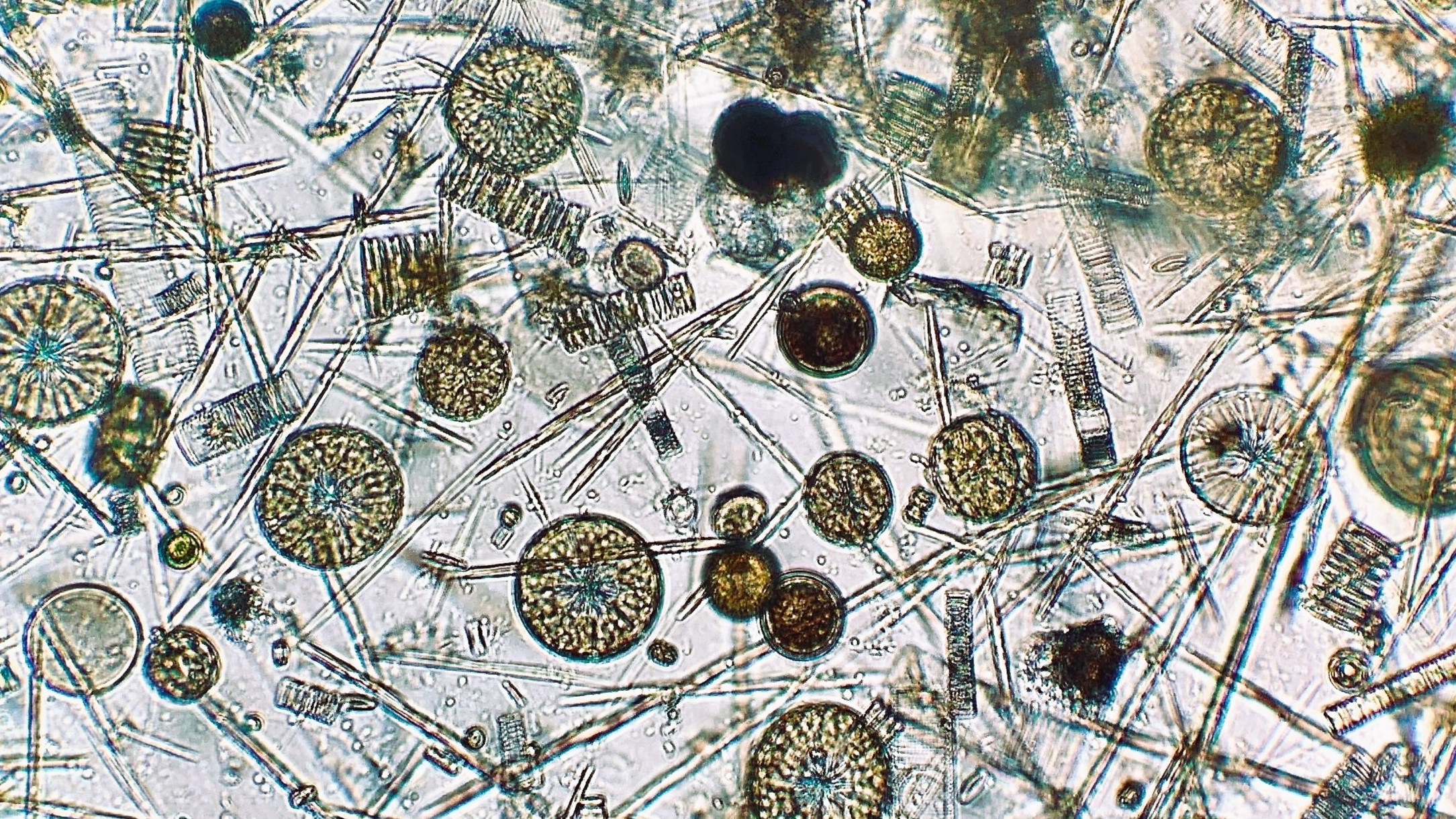Media release
From:
Researchers from Denmark, New Zealand, Australia, Spain and the USA have reconstructed the composition of phytoplankton communities around Antarctica over nearly three decades, the most comprehensive study of its kind to date.
The study documents a significant shift in the species of marine phytoplankton — the microscopic single-celled algae that are the first link in the ocean food chain.
Led by the Danish Meteorological Institute (DMI), the study shows that energy-rich diatoms, preferred by krill, are declining across large areas of Antarctica as they are outcompeted by smaller, less nutritious phytoplankton species.
The study published in Nature Climate Change today documents a significant shift in the species of marine phytoplankton — the microscopic single-celled algae that are the first link in the ocean food chain.
“We may be witnessing a fundamental reorganisation of life around Antarctica”, said lead author Dr Alexander Hayward, climate scientist at the National Centre for Climate Research, DMI.
“The tiny algae at the base of the Antarctic food web are changing in ways that could ripple through the entire ecosystem — from krill to whales — and alter how the ocean helps regulate our climate.”
The implications of a shift from diatoms towards haptophytes and cryptophytes mean less food for krill, which would affect penguins, seals and baleen whales that depend on krill.
Plant-like phytoplankton absorb carbon dioxide through photosynthesis. Diatoms — with dense silicon skeletons — sink quickly and drag carbon into the deep ocean. Haptophytes and cryptophytes do not sequester carbon to the same extent.
Satellite images, machine learning and NASA models
The research was based on a dataset of 14,824 field samples of phytoplankton pigments (the chlorophylls and carotenoids that drive photosynthesis) collected mainly during summer months from the Southern Ocean around Antarctica between 1997 and 2023.
"This study highlights the value of routine and opportunistic field sampling — grabbing a water sample every now and then and seeing what's in it” said co-author Dr Simon Wright, marine biologist at the Institute for Marine and Antarctic Studies.
“Over time it yields a valuable database."
Using advanced machine learning, this database was analysed to calculate the proportions of major algal groups based on their known marker pigments.
These results were combined with satellite data (such as ocean colour of algal blooms, sea-ice concentration, and sea surface temperature), environmental conditions (using NASA’s ECCO-Darwin biochemistry model that includes the cycling of carbon, nutrients, oxygen and alkalinity) and field measurements to model phytoplankton groups in the Southern Ocean over the 26-year time period.
Antarctic food chain is changing
“Our analysis showed that from 1997-2016, there were major reductions in populations of diatoms as sea ice increased”, said co-author Dr Pat Wongpan, sea-ice scientist with the Australian Antarctic Program Partnership at the University of Tasmania.
“Diatoms were replaced by haptophytes and cryptophytes that are more effectively grazed by jelly-like salps, which are poor food for fauna and less efficient in carbon transport.”
Over the study period, the iron content (a micronutrient important for phytoplankton) of surface waters decreased and temperatures rose — a cocktail that hit the iron-demanding diatoms particularly hard. Cryptophytes and haptophytes are less dependent on iron and therefore cope better in the changed environment.
Changes in plankton communities became more pronounced after 2016, when Antarctica experienced a dramatic reduction in sea-ice extent. Trends reversed, with a rebound of diatoms and sharp cryptophyte growth indicating a regime shift linked to sea ice, iron supply and warming.
While phytoplankton are critical to the iconic Antarctic marine food web and to the biological carbon pump, long-term shifts in their community composition are poorly understood. This novel study aims to change that.
“Our research documents an ecological system change in the southern polar ocean caused by climate change, which could itself influence the climate through a feedback mechanism.”
“The carbon dioxide that would otherwise be stored in the deep ocean could now be released back into the atmosphere”, Dr Hayward said.
“The correlation observed between changes in phytoplankton communities and the regime shift associated with trends in sea-ice coverage highlights the sensitivity of the Antarctic marine ecosystem to climate change”, the paper concluded.
Multimedia










 Australia; International; TAS
Australia; International; TAS



